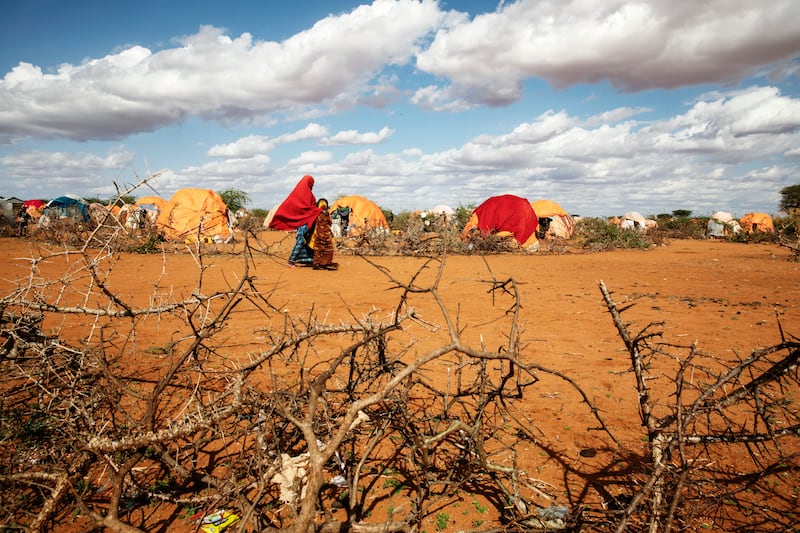How do you report on mass starvation? That’s something that I’ve been asking myself over the last week while in Somalia, where millions of people are in urgent need of food aid amid a devastating drought.
How do I translate the terminology that technical experts and aid organisations use to classify the severity of malnutrition for an audience that may not understand that there are many gradients between starving to death and getting by? And how do we assess the scale of the deaths, when so many are going unrecorded?
Last month, I took part in a panel discussion in Dublin with doctors from Médecins Sans Frontières. They were talking about the current hunger crisis in northwest Nigeria, and invited me to take part as I have reported from their malnutrition clinics in the broader region.
They explained how, between January and September this year, their teams treated nearly 100,000 children who were suffering from acute malnutrition.
READ MORE
I spoke about the challenges of writing about malnutrition for a general audience. Attendees asked how crises like northwest Nigeria’s can be ongoing, yet the Irish public have so little awareness of them. One of the reasons, I posited, is a failure by western media to cover the world equally. Until this month, for example, I was the only journalist contracted to Irish media reporting on the whole continent of Africa (RTÉ has just, thankfully, announced a new Nairobi correspondent).
Should reporting only focus on the need for an international and local aid response, or should we be questioning who is accountable for the situation in the first place?
In its global overview for 2023, the United Nations Office for the Coordination of Humanitarian Affairs said that the “largest global food crisis in modern history is unfolding.” It is driven by conflict, climate shocks and the looming threat of global recession. As this year closes, at least 222 million people across 53 countries are expected to face acute food insecurity, it said, and “starvation is a very real risk for 45 million people in 37 countries.”
Starvation can weaken children’s immune systems to a point where they die quickly from measles, diarrhoea or another illnesses, meaning those deaths may not be recorded as hunger-related, even though they are. And starvation is not just about death. How do you show the physical and mental stunting it can cause in children, which will affect them throughout their lives? As a journalist, can you track a family over time, watching, for example, as parents encourage hungry children to drink water and trick their stomachs into feeling full? I interviewed parents who were doing this in northern Uganda, during the first few months of the Covid-19 lockdowns, but morally, I felt that I couldn’t keep monitoring them without doing anything. I ended up helping the families, and dropping the reporting.
Mass starvation is not all about death. It is about reduced brain development; a lack of bodily growth; the loss of energy, drive and ambition; the loss of imagination. I’ve interviewed teachers who say children become incapable of learning, though – often – they still attend school, desperate for the chance.
Hunger also makes victims more vulnerable to different types of extortion. It can lead to increases in early marriage; in child labour; and a loss of other opportunities.
Should reporting only focus on the need for an international and local aid response, or should we be questioning who is accountable for the situation in the first place? In a world where there is enough to feed everyone, why are people in need at all?
How do you explain that, in a place where people are hungry, there is usually food? There are wealthy elites eating meals in comfortable homes inside walled compounds. There are often stocked shops. There is business taking place, and there is always someone managing to profit.
The war in Ukraine, coming after the Covid-19 pandemic, has led to a massive upsurge in the cost of food and fuel across Africa, as in much of the world. This month, The Irish Times published an investigation about how a cost of living protest in Sierra Leone last August resulted in dozens of civilians being shot, and how the real death toll was even higher than was officially recorded.
In 2020, the World Food Programme won the Nobel Peace Prize “for its efforts to combat hunger, for its contribution to bettering conditions for peace in conflict-affected areas and for acting as a driving force in efforts to prevent the use of hunger as a weapon of war and conflict”.

“The world is in danger of experiencing a hunger crisis of inconceivable proportions if the World Food Programme and other food assistance organisations do not receive the financial support they have requested,” the Nobel Peace Prize said in its press release.
“The link between hunger and armed conflict is a vicious circle: war and conflict can cause food insecurity and hunger, just as hunger and food insecurity can cause latent conflicts to flare up and trigger the use of violence ... Providing assistance to increase food security not only prevents hunger, but can also help to improve prospects for stability and peace.”
So far, Somalia’s devastating drought and mass starvation has been determined not to meet the technical requirements that would see it called a famine. Will that happen in the coming months? And where else will this word not be used, yet malnutrition and starvation will continue to stymie futures?














